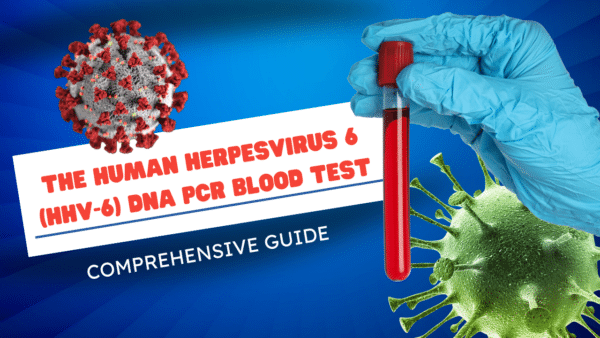About ⅓ of all people with diabetes do not know they have the disease. Which means that there are millions of people out there suffering from the symptoms of diabetes for a disease which is completely treatable. How much different would your life be if you asked the question “Do I have Diabetes?” and then sought out the answer? So, let’s talk about Diabetes in order to help put you on the path to getting that answer.
Do I Have Diabetes?
To answer that question, we need to determine if you’re more or less susceptible to having and/or getting Diabetes. People over 40 are more at risk, although Juvenile Diabetes (also known as Type 1 Diabetes) is on the rise. Also on the rise is people with prediabetes, which tend to be younger people with elevated blood sugar levels that will lead to eventual Type 2 Diabetes if left untreated.
According to the American Diabetes Association, your ethnicity is a big factor as to whether you are at risk. Native Americans are most at risk. African Americans are next with Hispanics just slightly under. Puerto Ricans and Mexicans have a higher risk than Cubans or Central & South Americans. Faring slightly better are Asian Americans, with Indians, Filipinos and Pacific Islanders more at risk than the Japanese or Chinese. Finally, non-Hispanic Caucasians are a titch under Asian Americans, but still make up a significant amount of people.
Are you overweight? Do you have high cholesterol rates or high blood pressure? Do you spend a lot of time not being physically active? Answer yes to any of those questions and your risk factor increases even more. It should go without saying, but if you already have a family member with Diabetes, you are REALLY very likely to have Diabetes too!
What is Diabetes?
There are really two types of Diabetes – Type 1 & Type 2. There’s also Gestational Diabetes that pregnant women can develop over the course of a pregnancy, but those are special cases and only last for the duration of the pregnancy. Prediabetes isn’t a real diagnosis, more of a condition that leads to Type 2 Diabetes.
Type 1 Diabetes
As mentioned earlier, it’s also known as juvenile diabetes, not because it only affects young people, but it does usually develop in children and teenagers. It can, however, develop at any age! When people think of Diabetes, this is the type that comes to mind, with the injections of insulin needed to maintain blood sugar levels.
With Type 1, your body’s immune system is attacking parts of your own pancreas. Why? Doctors still aren’t really sure. What they do know is that the immune system sees the insulin-producing cells in the pancreas as foreign invaders and destroys them. Without insulin, your body can’t process glucose. That glucose is trapped in the bloodstream and the cells that need it die from starvation. That’s why Type 1 Diabetes sufferers need to take daily insulin shots.
Type 2 Diabetes
Type 2 sufferers can still process insulin, but usually it’s not enough insulin. This is called having insulin resistance. You don’t need to take a daily shot. What’s necessary is a change of diet, some more exercise and perhaps some oral medications. This will help your body use the insulin it does make more efficiently.
What If I Ignore My Diabetes?
Well, you could die. No, seriously, you could die.
First, you’d go into Diabetic Ketoacidosis. That’s when the sugar builds up in the blood and the cells try to break down fat to fuel themselves. This results in weight loss, which a lot of people think might be a good thing, but it’s not. It ends in death.
Or you could develop a Hyperosmolar Hyperglycemic state where you start to go blind, get leg cramps, abdominal bloating, then death.
You could lose your vision. You will suffer nerve damage, which can lead to gangrene and amputation. You will damage your heart and kidney, which will lead to failure of both organs. If you don’t die, you will be on dialysis for the rest of your life.
Can we agree that leaving Diabetes untreated is not a wise thing to do?
Diabetes Symptoms
How can you tell if you’re in danger? There are symptoms. However, with Type 2, you can have the disease and not have the symptoms. That’s what makes is so underdiagnosed. People don’t even realize they are at risk. That said, if you fit the criteria above and start to get any of the following symptoms, get tested:
Frequent Urination
Increased Appetite
Weight Loss (see Diabetic Ketoacidosis)
Fatigue
Blurred Vision
There are more. We highly recommend you check out our other blog post Could I have diabetes? Top Symptoms Check List. It goes into more detail on the signs and symptoms of diabetes.
Testing for Diabetes
Here’s what you can do. There are a variety of blood tests to determine if you have Type 1, Type 2, Prediabetes or Gestational Diabetes.
Glucose, 1 Hour Blood Test – This is for pregnant women. Somewhere between the 24th and 28th week, it is common practice to get this test to see if the mom to be has Gestational Diabetes. This test is recommended by the American Congress of Obstetricians and Gynecologists.
Glucose Serum Test – This is the most direct single test to uncover Diabetes. This test is good for determining both Type 1 & Type 2 Diabetes. It’s also a good test to discover if you’re prediabetic. But if your glucose level is too low, that means you’re hypoglycemic. However, this is just a snapshot of your glucose levels.
Hemoglobin (Hgb) A1c Blood Test – Because glucose levels can fluctuate significantly, this test gives a much more broad picture. It measures how much glucose is in your blood over a period of 2-3 months previous to the test. Not only can you find out your risk for Diabetes, but it’s also useful in managing Diabetes if you’ve already been diagnosed.
FYI, The Mayo Clinic recommends getting both the Glucose Serum Test AND Hemoglobin (Hgb) A1c Blood Test to ensure you have good Diabetes management!
Diabetes #1 Baseline Blood Test Panel – This is a more comprehensive test that not only measures your glucose levels, but also checks Kidney functions & Liver functions. It also measures your fluids and electrolytes. And finally, there’s a CBC blood test to measure the health of your blood in general. This is an especially useful test if you are already high risk and want to know what damage might already have happened to your body.
Diabetes #2 Essential Blood & Urine Test Panel – This is a much more in depth look than the Baseline Panel. It looks into all the same areas, but with a finer tooth comb. There’s also a Fasting Insulin test included, a complete urinalysis and a C-Peptide test. Because C-peptides are generally found in equal amounts to insulin, it’s a good barometer of Insulin level and helps in the determination of Type 1 & Type 2 Diabetes.
Glucose Tolerance Test (GTT), Two-hour Blood Test – Knowing glucose levels are great, but sometimes your doctor wants to know how your cells are able to absorb (or not absorb as case may be) sugar. There’s blood drawn to set a baseline. Then you’d drink a glucose solution. Two hours later, there’s a second blood draw. In this way, you can find out how your blood sugar levels change over time. This is also a useful test to track the progression of the treatment of Diabetes if you’ve already gotten that diagnosis. There is also a Glucose Tolerance Test (GTT) 3-hour, 4 Specimen.
According to the World Health Organization, there is an emerging global epidemic of Diabetes with total deaths projected to rise more than 50% over the next 10 years. That is completely unacceptable in a world where Diabetes is easily diagnosed and treated! Get tested!

